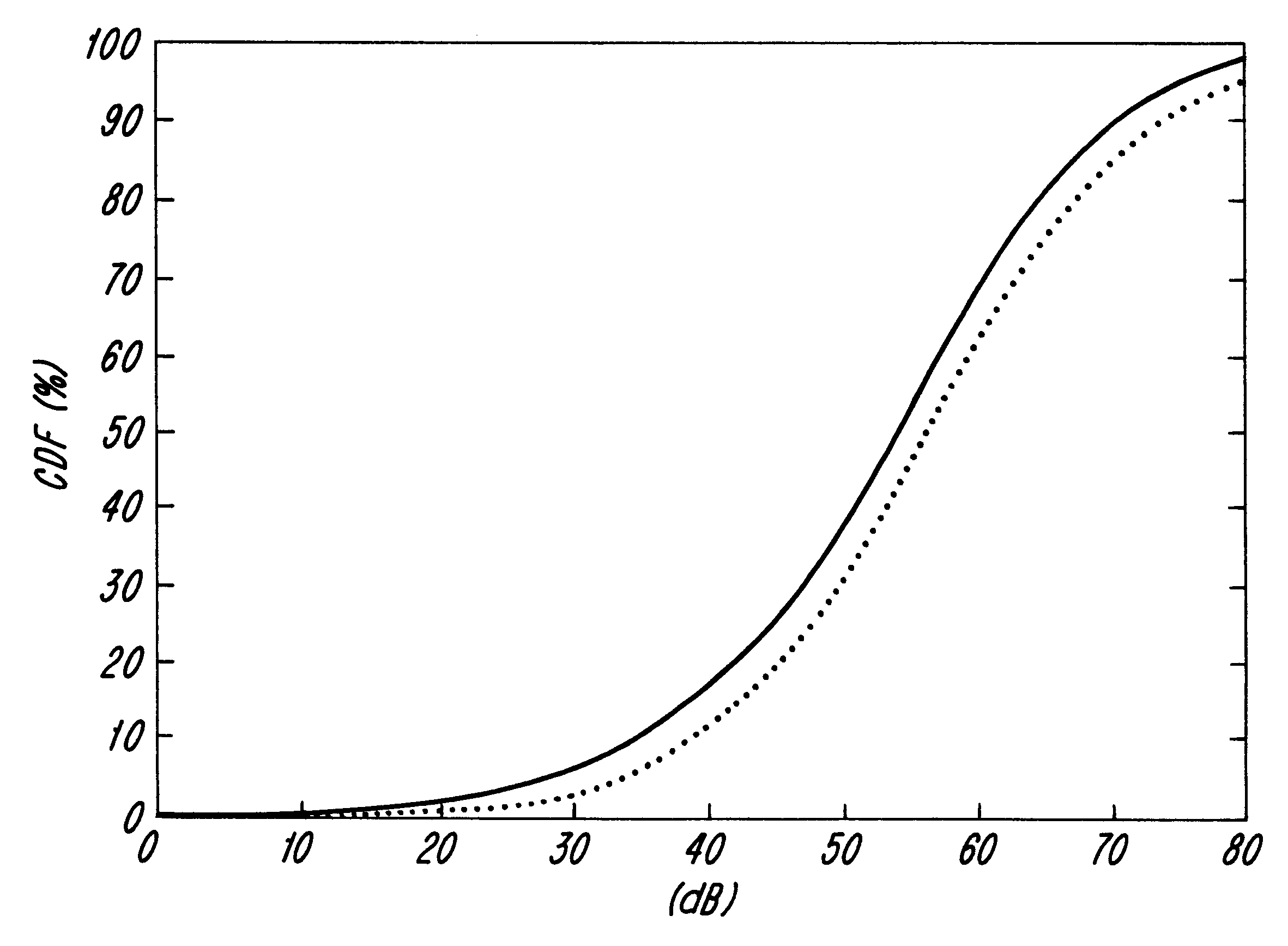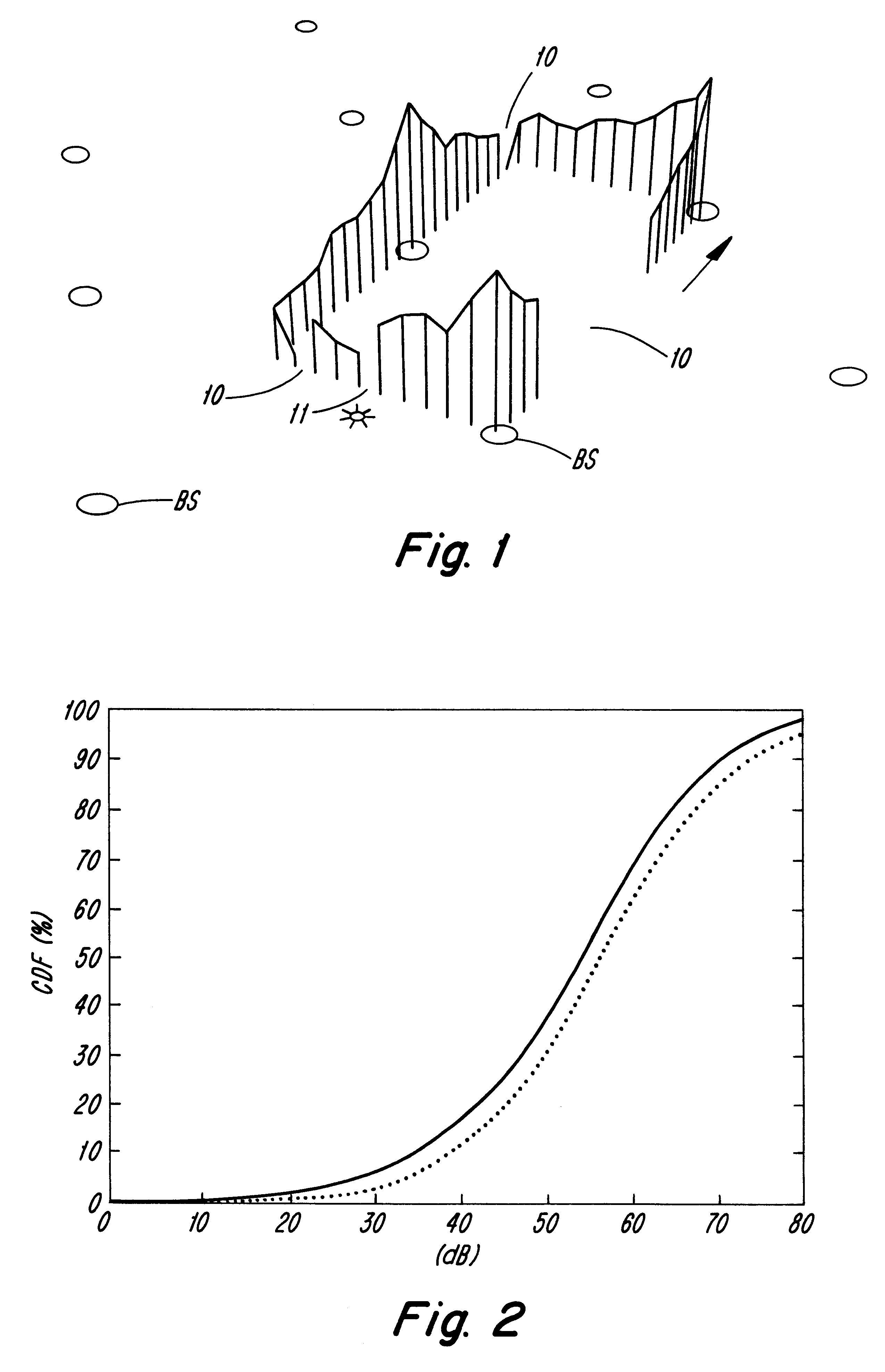Intra cell handover and channel allocation to reduce interference
a technology of intra-cell and channel allocation, which is applied in the direction of radio transmission, transmission, wireless communication, etc., can solve the problems of affecting the quality of the call, the call may not be received by the mobile station ms, and the call may be severely interfered with another call in the downlink
- Summary
- Abstract
- Description
- Claims
- Application Information
AI Technical Summary
Benefits of technology
Problems solved by technology
Method used
Image
Examples
Embodiment Construction
The mobile subscriber density is foreseen to increase, especially in crowded city areas. There are different methods to handle this increase and one of the most powerful is to increase the number of base stations (BSs), thus reducing the cell area for each. Downtown areas could be covered by cells with a radius of about 100-200 meters and with antennas mounted below roof level. These cells are called micro cells and may be introduced in existing TDMA systems in different ways.
One possible scenario could be a traditional cell plan covering a given area. The increasing subscriber density in certain places, for instance in a downtown area of a city, introduces a need for increased capacity in that area. Micro cells are added and a part of the available radio spectrum from the large cells, or macro cells, is given to the micro cells. New handover strategies covering handover between micro cells and macro cells result in a two layer hierarchial cell structure.
The micro cells could be pla...
PUM
 Login to View More
Login to View More Abstract
Description
Claims
Application Information
 Login to View More
Login to View More - R&D
- Intellectual Property
- Life Sciences
- Materials
- Tech Scout
- Unparalleled Data Quality
- Higher Quality Content
- 60% Fewer Hallucinations
Browse by: Latest US Patents, China's latest patents, Technical Efficacy Thesaurus, Application Domain, Technology Topic, Popular Technical Reports.
© 2025 PatSnap. All rights reserved.Legal|Privacy policy|Modern Slavery Act Transparency Statement|Sitemap|About US| Contact US: help@patsnap.com



